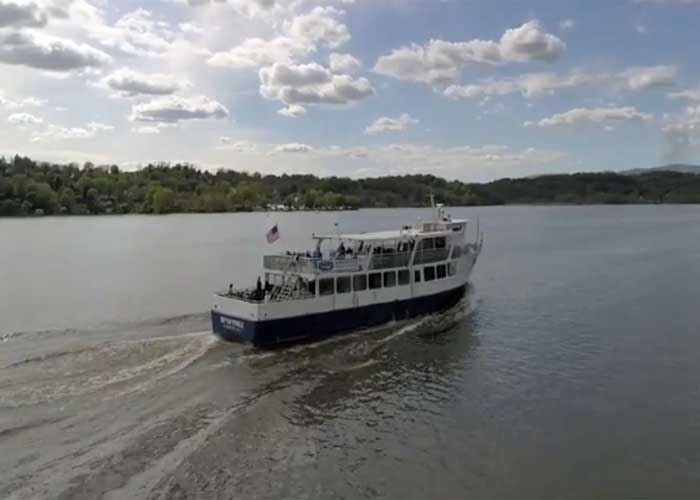KINGSTON – As boating season gets underway on the Hudson River, one large vessel stands tall among most; the Rip Van Winkle (Rip), which operates out of the Rondout Creek in Kingston.
At 125-feet-long and weighing 200 tons, the large boat towers over most other craft on the water. The boat was constructed in 1980 and was originally designed to shuttle supplies to offshore oil rigs. When the oil-drilling industry downsized, the Rip was sold and eventually became a charter boat carrying passengers up and down the Hudson.
The boat is now owned by Hudson River Cruises and routinely runs sightseeing tours, taking passengers from the Kingston waterfront down to the Hyde Park area and back. The three-hour sightseeing trip allows people to take in the majestic views of the valley, including several historic landmarks. Unlike small pleasure boats, the Rip is rarely affected by waves created by passing cargo ships.
Piloting the Rip requires years of training, testing, and experience. One of the Rip pilots is Jeffrey Pyle, a former Marine with 31 years of experience on boats of various shapes and sizes, including 21 years as a licensed pilot.
Pyle currently holds a United States Coast Guard license of “Master of Steam and Motor Vessels Near Coastal” and also has a towing endorsement. The towing endorsement has allowed the captain to act as a floating tow-truck on New York’s canals, to rescue broken or stranded boats. Pyle explained that the Coast Guard has stringent rules for both passenger vessels and the pilots who operate them. “The Coast Guard requires vessels such as the Rip to have very thorough inspections that include the checking of the thickness of the hull for passenger safety,” said Pyle. The licensing requirement is just as stringent, requiring the pilot to have at least 720 days of experience on large ships, a physical, and first aid certification, among other requirements.
From the wheelhouse of the Rip, the captain’s view is limited to the front and sides of the boat. Smaller crafts that approach the Rip can be obscured when they get close to the sides of the larger ship. Docking the Rip presents an even bigger challenge. According to Captain Pyle, the Hudson River Cruises dock on the Rondout Creek is only about one foot longer than the boat itself. When returning to the dock, the large boat travels up the creek, past the dock and makes a tight u-turn on the narrow creek before approaching the docking site.
The operation is performed at the same time smaller boats and kayaks are also plying the creek. Pyle said that experience and “finesse” make the task much easier. “The boat doesn’t have brakes so proper throttle application is necessary to get the boat to the dock without damaging surrounding boats or the dock itself,” said Pyle. When the boat approaches the dock, the three accompanying deckhands grab the heavy ropes used to secure the boat to the dock. At the appropriate time, the captain orders the ropes to be tossed to the pier and secured.
After the craft is secured and passengers disembark, the captain and crew begin the work of cleaning the boat, checking the engines, and making the boat ready for the next trip.
Additional information about the boat and services offered can be found at https://www.hudsonrivercruises.com/.








